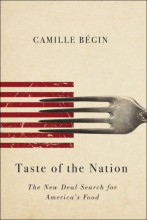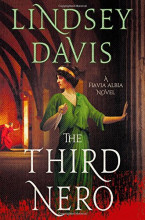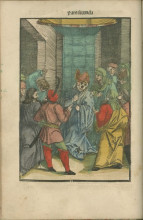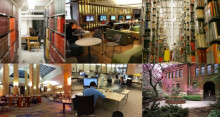Val Waldron
Library Blogs
Showing 1 - 9 of 9 items
Results
for Date: September 2017

The CVGA has quite a few new games available for play. We also have a Nintendo Switch available, with several games to go with it. Did you know that there's an RSS feed on our main page that lists all games that were recently added to our collection? Check out our main page for more details.

In line with the University of Michigan Library's strategic plan to support diversity, individuals in the Library Information Technology division started a Diversity Reading Club where colleagues can come together to lean and discuss readings on the subject. The Reading Club has been going for over a year and a half, and we discuss what it is and why we think it works.

Glass Houses is the latest entry in Louise Penny’s long-running mystery series featuring Chief Superintendent Armand Gamache of the Sûreté de Québec, who lives in the tiny village of Three Pines. After Three Pines' Halloween party, a mysterious figure in a black cloak haunts the village green. Two days later, the figure disappears, but the body of a woman, a visitor to Three Pines, is found wearing the cloak. The story of the murder alternates with the trial of the person accused of it, several months later. Meanwhile, Gamache is trying to capture the head of the most powerful drug cartel in Québec. There is, of course, a connection between the drug trade and the murder in Three Pines, but part of the suspense is figuring out what it is.

From September 19 to November 15, the Asia Library (Hatcher Graduate Library 4th Floor North) will be hosting an exhibit that commemorates the 45th anniversary of the Chinese Table Tennis Delegation’s historic visit to the U.S. in 1972, especially to Ann Arbor and the U-M.

Join us at 4pm on Sept. 20 in the Hatcher Gallery. Dr. Camille Bégin, author of Taste of the Nation: The New Deal Search for America’s Food, will shape a cultural and sensory history of New Deal-era eating, illustrating how nostalgia, prescriptive gender ideals, and racial stereotypes shaped how the FWP was able to frame regional food cultures as “American.”

Ancient Roman detective Flavia Albia has been hired by palace officials working for the paranoid emperor Domitian to investigate a conspiracy involving a man who pretends to be the emperor Nero. Meanwhile, the newly-married Flavia cares for her husband, who's survived being struck by lightning but has never been the same since, and contends with a series of domestic troubles.

In honor of the 200th anniversary of Jane Austen’s death, the Nineteenth Century Forum and the Special Collections Library at the University of Michigan invite interdisciplinary papers that explore movement, mapping, or the margins within the late-eighteenth or nineteenth centuries. Please email abstracts of no more than 300 words to austenmaps@gmail.com by October 1st 2017. Please also include a paper title, your name, and institutional/departmental affiliation.

Highlighting manuscripts and early printed books from the Special Collections Library, our new exhibit Reforming the Word: Martin Luther in Context commemorates the 500th anniversary of the Protestant Reformation. Join us for an opening lecture by guest curator Professor Helmut Puff on Friday, September 15 at 4:30 P.M. in the Library Gallery.

There are many ways to record and analyze what is happening in the University of Michigan libraries over time. The more we understand how users are engaging with our spaces, the more we can do to meet their needs. But how do you get a handle on such a big question (library space use)? What data do you collect and how do you break it down?